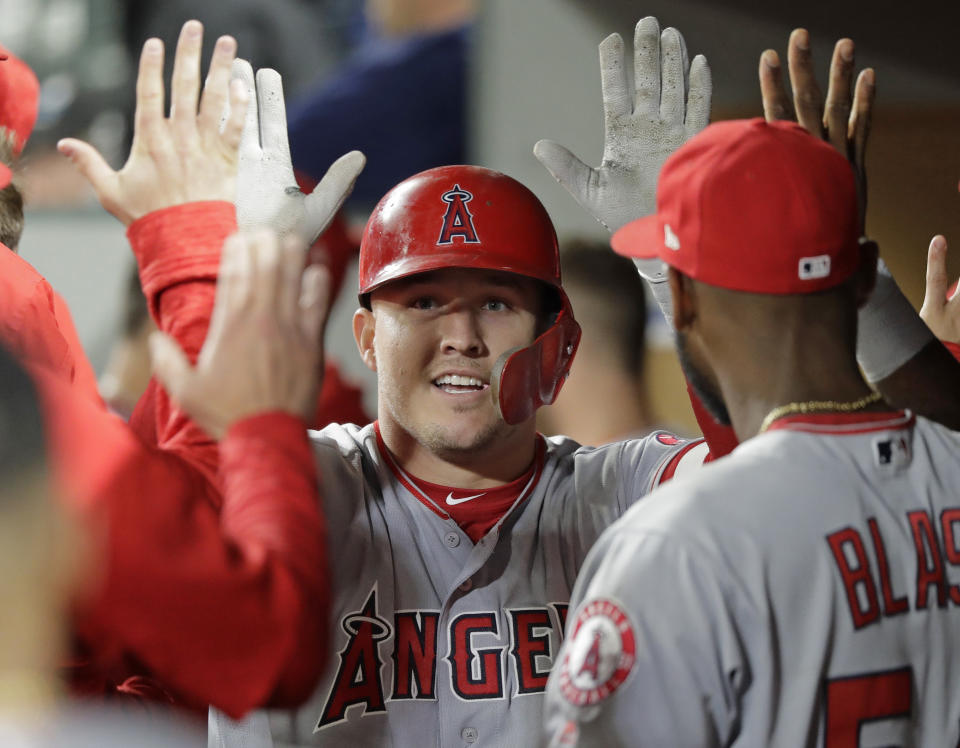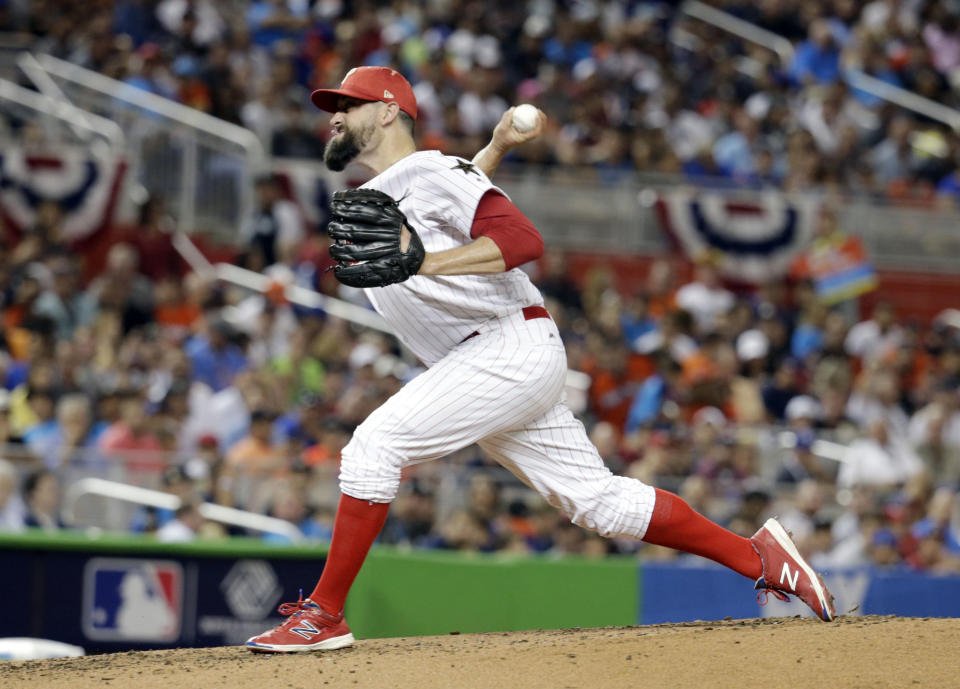All-Star Game 'participation trophies' are vital to growing baseball's fandom
The rosters for the 2018 All-Star Game were revealed on Sunday night. And in the grand tradition of many All-Star Game reveals of the past, criticism followed. The main thrust is usually whether the All-Star Game does (or should) represent the absolute best players in the game, or whether it’s a popularity contest. But there was another point of view floating around as well, criticizing the rule that each of the 30 MLB teams are required to have one representative at the All-Star Game.
Jayson Stark of The Athletic suggested the demise of that rule while lamenting the disappointing snubs in this year’s All-Star voting.
Every position-player snub on this list can be traced to the way the players voted. The fans got this almost exactly right. So…
The players voted Gleyber over Lowrie…Story over Turner…Votto over Aguilar & Muncy.
The fix: Eliminate the every-team-needs-an-all-star rule! https://t.co/7wdy2rOAtW
— Jayson Stark (@jaysonst) July 9, 2018
Getting rid of the every-team-needs-an-All-Star rule might allow some of those snubs to find their way to the All-Star roster. But there’s a more serious ramification. Eliminating that rule would eliminate one of MLB’s best and easiest ways to gain new fans, and increase the devotion of the fans it already has.
It’s not just a “participation trophy”
It’s easy to brush off the one-player minimum for each team rule as a “participation trophy” of sorts. But it’s not a modern invention. The rule has been in place since 1935. And if that 83-year-old rule was eliminated, that invites some tough questions. If not every team deserves to have at least one All-Star, then which teams do? Is it just the ones with the most fans, because more fans means more votes? Is it the ones who are in contention for their division or a wild-card spot, because those fans are more energized? If that’s true, then some of the best players in baseball will be missed.

The Los Angeles Angels are 14.5 games out of first place and share a city with the popular (and contending) Los Angeles Dodgers. But the Angels have Mike Trout, who is having an otherworldly season. Does that mean Trout shouldn’t get a spot? Or what about Whit Merrifield of the Kansas City Royals and Shin-Soo Choo of the Texas Rangers? They’re both standout players on their teams, which are both are at the bottom of their divisions. Does that mean they don’t deserve a spot because they’re not well-known players on popular teams?
Thinking about it as a participation trophy misses the point of, well, baseball as a whole. It misses the point of having more than just four or six teams per league. Baseball is about more than just the most popular or most competitive teams. And the All-Star Game is about more than celebrating the players on popular and competitive teams. Because players can have All-Star seasons while playing for teams that can’t find a win with a flashlight, a map, and a GPS, and they shouldn’t be penalized for it.
One player from each team builds fandom
Getting rid of the one-player-per-team minimum would actually hurt MLB’s quest for younger fans. Because it assumes that the only deserving players are on popular or contending teams. Just because the Miami Marlins have attendance issues doesn’t mean the team doesn’t have fans, and it doesn’t mean there are no deserving players on that team. Compared to a team like the Dodgers, the Marlins’ fanbase isn’t as large or as intense. But don’t those Marlins fans deserve to see their best player recognized in some way on MLB’s biggest stage? Doesn’t that player deserve that moment for being a bright spot in their team’s losing (and possibly depressing) season?
If the All-Star Game was all about showcasing the “best” players, the answer to those questions would be no. But the All-Star Game isn’t really about that. If it was, then no one would vote and MLB would select players based on stats alone. Allowing players and fans to vote turns it into a popularity contest, because there are a host of motivations behind every single All-Star Game vote. Fans and players vote for who they think is the best, or most deserving, or just simply the guy they like the most.
So if it’s going to be a glorified popularity contest — which it already is — having a one player per team minimum means that every team matters in the eyes of baseball. That a small market team’s fans are just as important as the metropolitan behemoth. That both the Kansas City Royals and New York Yankees have players worthy of recognition, regardless of where they are in the standings or where their teams are located.

There’s no way to get it 100 percent right
The All-Star Game voting isn’t perfect, and it never will be. There’s no way to please everyone. There will almost always be at least one barely-good-enough guy on a basement team who gets a spot, while the fourth-best player on a stacked team is denied a place at MLB’s yearly talent showcase. Even if for some reason the format is changed, and the player vote or fan vote is eliminated or stats become part of the selection process, it’s never going to be 100 percent fair. MLB has too many truly good players for everyone who’s deserving to make it.
It can be frustrating for fans to see one of the better players on their team get snubbed in favor of a guy on a bad team who doesn’t have All-Star stats. But the fans of that bad team might tune in just to see him. In 2017, the Philadelphia Phillies were 22.5 games out of first place by the All-Star break. But waiting to see Pat Neshek, their lone All-Star, pitch in the game was a highlight for fans who had spent the season watching their team flail helplessly in the basement of the NL East.
There are lots of ways the All-Star Game can be used to build fandom in baseball. But the easiest way to build devotion among fans of any age already exists: let every team have an All-Star Game representative. That way, the kids in Miami or Kansas City or Baltimore, who love their team despite being far out of contention, have a reason to watch and cheer — and even more motivation to bug their parents to take them to a game.
– – – – – –
Liz Roscher is a writer for Yahoo Sports. Have a tip? Email her at lizroscher@yahoo.com or follow her on Twitter at @lizroscher.
More from Yahoo Sports:
• Huge brawl erupts between players, officials at youth basketball game
• Phil Mickelson calls himself on obscure rule violation at The Greenbrier
• Dwight Clark’s ashes buried next to famous goal post from ‘The Catch’
• Mexican club mocks Neymar in hilarious halftime contest


